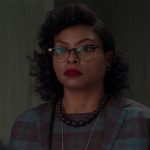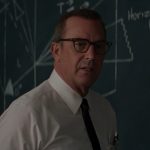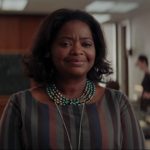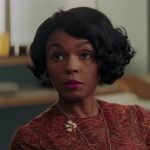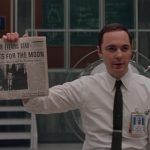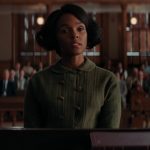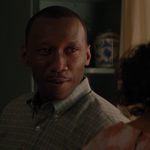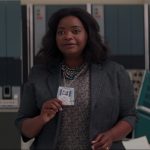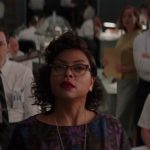Hidden Figures – 2016
This was a well-made film that tells the story of three black women in the late 50s and early 60s who work at NASA. They are mathematicians, each of whom, in their own ways, were crucial to the success of the United States in the Space Race. They not only had to deal with the blatant racism prevalent at that time in history, but they had to contend with unfair sexism as well. However, they each persevered and fought back against these terrible injustices.
Before the opening credits even appeared on the screen, I already knew how the movie was going to end. Unfortunately, in a film like this, the notion that any of the trio would not prove her competence and even superiority, or would not exceed the expectations of the white men and women who looked down on her, never even crossed my mind. I’m not saying that the film wasn’t enjoyable, or that it was without merit. On the contrary, I really liked the movie. But there were no surprises because I knew the three women would all be complete successes. And I was right. In that respect, the movie was all too predictable.
So really, the movie wasn’t just about how the three women were smart and successful. This was also a movie that was about how women and black people have been historically mistreated and how they had to fight to earn respect and equal treatment. This is an unfortunate truth, and movies like this are important to put in front of the public. Fortunately, the story was both entertaining and informative. The acting was good and the casting was incredible. The directing was spot-on and the sets and costumes were perfect.
The film starred Taraji P. Henson as Katherine Goble Johnson, a brilliant mathematician who worked as a human computer. She was a genius in the field of analytic geometry. Janelle Monáe played Mary Jackson, an aspiring engineer in an era when neither women nor black people were considered competent enough to excel in the field. And then there was Octavia Spencer, once again turning in a great performance, this time as Dorothy Vaughan, an incredibly intelligent mathematician and supervisor who taught herself to became an expert with the new IBM computers, using the FORTRAN programing language. The three women work at NASA in the gender segregated and racially segregated division of West End Computers of the Langley Research Center.
Kevin Costner played Al Harrison, the director of the Space Task Group where Katherine is assigned to work. Katherine and her work is constantly demeaned by her racist co-workers, led by the fictional composite character of Paul Stafford, played by Jim Parsons. Kirsten Dunst played Vivian Mitchell, the women’s supervisor who claims not to be racist, but who does nothing to help Dorothy get the supervisor’s title to go with the work she does. And the final recognizable name in the cast is Mahershala Ali, playing Jim Johnson, the wonderful and charming young military man who falls in love with and eventually marries Katherine.
Of course, by the end of the film, all three women prove that they are smarter than anyone expected and they earn the respect of their white, male co-workers. The plot was inspiring, empowering, and yet completely predictable. Katherine figures out the math that nobody else can so that America ends up winning the Space Race, Mary goes to court and convinces the white judge to allow her to attend night classes at an all-white college in order to get her engineering degree, and Dorothy teaches herself computer programing so that she and all her black co-workers won’t be put out of a job by automation.
Critics of the movie make the point that the movie’s lack of historical accuracy seemed to be unnecessary, though to be honest, I thought the filmmakers did just fine adhering to history. However, there were a few scenes that were made up in order to advance the filmmakers’ agenda. For example, in the film, Katherine had to leave her desk for forty minutes every time she had to go to the restroom because the colored restrooms were half a mile away in another building. In reality, she simply used the white restroom and nobody really complained. Also, the scene in which Harrison smashes the Colored Ladies Room sign and angrily abolishes the colored segregation at the facility never happened. And in reality, Mary never had to go to court for anything. She simply asked the City of Hampton for an exception to attend the whites-only high school and it was granted.
Critics said that these and other fabricated scenes were guilty of creating a “white savior” trope in the movie. The film’s director Theodore Melfi, said, and I’m summarizing here, that he was offended by the accusation because his movie wasn’t a “black” film. It was just a film. The fact that it happened to be about black people was immaterial. And maybe this is true, I don’t know. There are valid arguments to be made for both sides of that slippery coin, and I’m not going to say who was right. I suspect they both were. But what I can say is that I liked the movie, as did most of the people who watched it. It was definitely a worthy nominee for the Academy Award for Best Picture.
